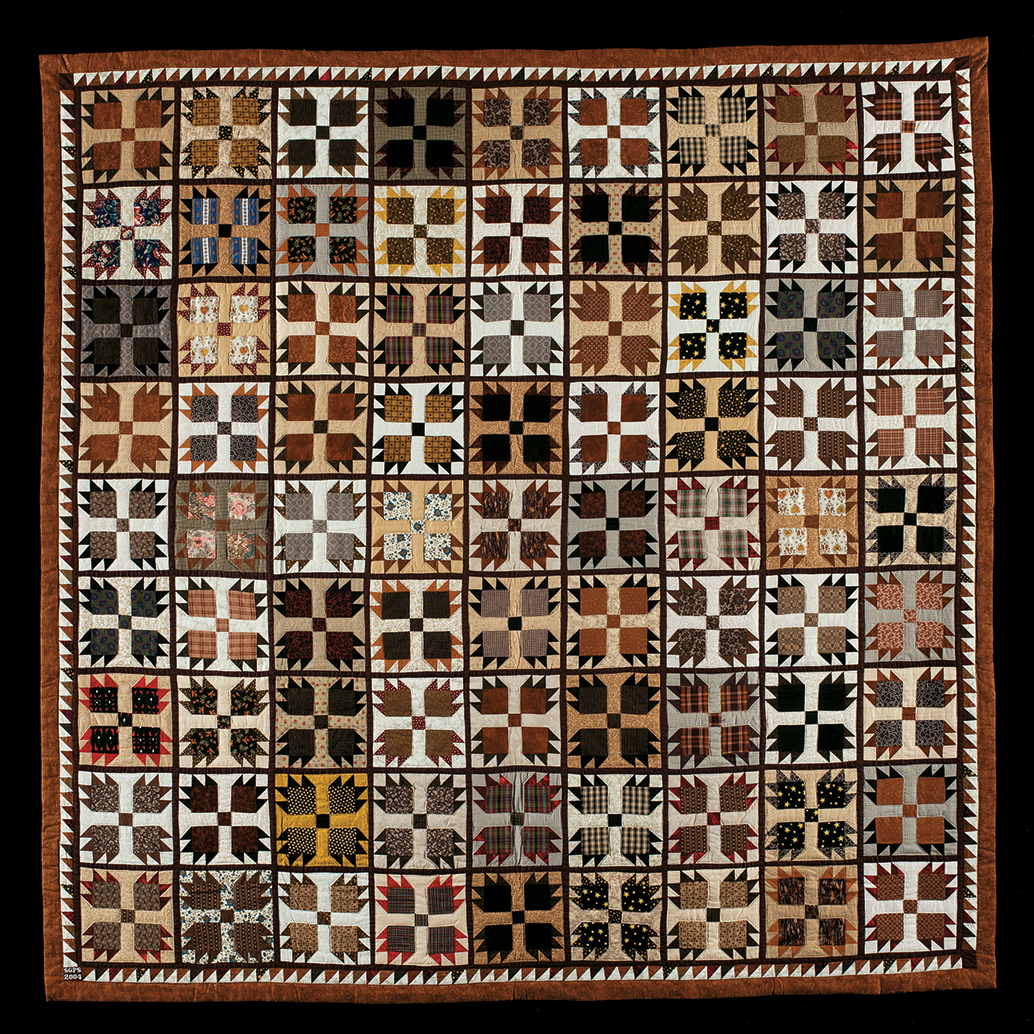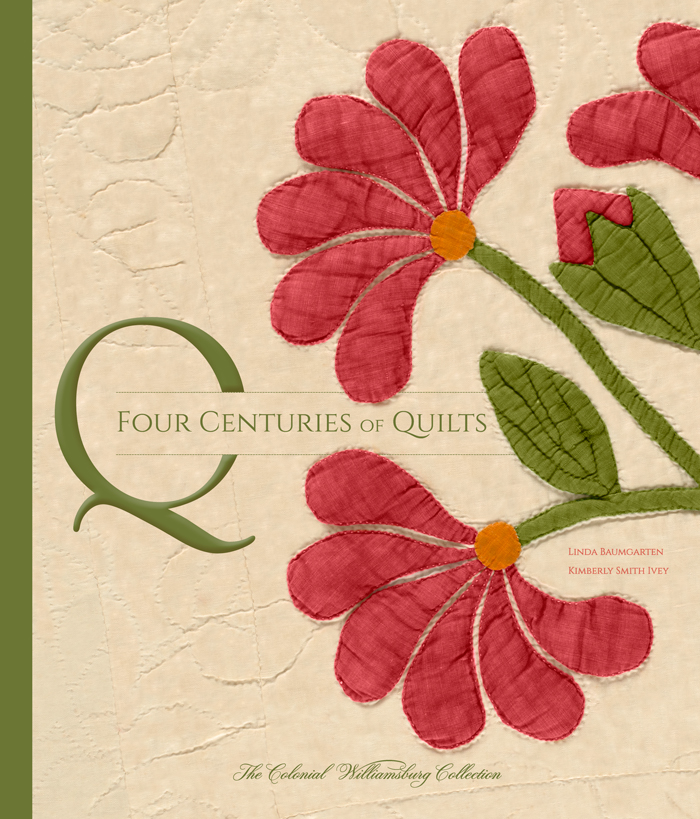We’re thrilled to announce a forthcoming collaboration with the Colonial Williamsburg Foundation. This October, they will publish, and we will distribute, a monumental and eye-poppingly gorgeous book on quilts. By Linda Baumgarten and Kimberly Smith Ivey, and with a foreword by Ronald Hurst, Four Centuries of Quilts: The Colonial Williamsburg Collection draws from this world-renowned collection to include quilts made by diverse religious and cultural groups over 400 years and across continents – from the Mediterranean, America, England, France, and Polynesia. We’re pleased to share with you today a sneak peek from the book in the form of the touching coda, entitled “Closing Remarks.”
It is mid-July 2012. The authors are talking with Colonial Williamsburg’s decorative arts librarian, Susan Shames, who was immensely helpful in the time-consuming genealogical research of the quilt makers. We are discussing the underlying theme of sisterhood that weaves throughout many of our quilt stories. Susan becomes pensive. Looking up she quietly informs us, “I quilt with my sister, too”.
Susan’s words so succinctly reinforce the significance of quilts and why it is important to study them today. Quilt making transcends time. In addition to their warmth and beauty, quilts symbolize the unique experiences and contributions of women–both past and present. As connectors, or, if you will, direct highways, to the past, other cultures, and other peoples, quilts are important historical documents. They are a wealth of information, as informative as a history class, and certainly more beautiful and enjoyable to study. Through the study of quilts, we learn about the evolution of styles and fashion; social, political, and economic issues of particular times and places; and the importance of family and community ties. Mensie Lee Pettway, twentieth-century African American quilt maker from Alabama, said, “A lot of people make quilts just for your bed, for to keep you warm. But a quilt is more. It represents safekeeping, it represents beauty, and you could say it represents family history.
Most, if not all, of the quilts presented in this book elicit a response from the viewer whether it’s because of their beauty, the skill with which they were created, or their vibrant color, remarkable condition, known provenance, and so on. They are made from cloth–the most intimate medium, for we are swaddled in it at birth, married in special clothing, and at death we are wrapped in it. Many quilts actually take the viewer into the sublime. They make you feel something you might not have felt otherwise. This is what makes many quilts a form of art and not simply a craft with the function of providing warmth. Through the study of quilts, quilt making, and quilt makers, we become interested in the life outside of our own and, thus, less self-centered and better citizens of the world.





 Deobandism, Islam and the Religious Narratives of the Taliban
Deobandism, Islam and the Religious Narratives of the Taliban